Course Presentation
Main Uses
The Course Presentation object allows instructors to present content and assessments on slides with the possibilities of interactivity. The content may include texts, images, audios, videos, and quiz questions.
Note: There is option under the “Behavior settings” to turn on the Active Surface Mode, which will hide the slide navigation control.
How to create
1. A classic mode that presents texts, an image, a video, and a quiz on the slides
Example 1
2. A classic mode that converts long text-based and image content into slides that save space and show examples side by side
Example 2
This is an excellent example of how we can use the features of the object, such as organizing and grouping content to present them on separate slides. On each slide, we can add elements, such as hotspots to explain specific areas or points of interest, as well as incorporate audio, video, and other media. The features also allow us to compare or display two objects side by side in a graphic format, with connecting lines to highlight changes or relationships.
For this example, a copy of original written content and an H5P object are presented to show the effects.
Original content
The natural minor is a useful starting point when studying all three of the minor scales. We can create a natural minor scale by lowering the third, sixth, and seventh degrees of a major scale by one semitone.
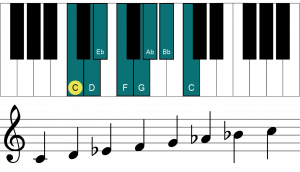
In the image, we can see that the E (3rd), A (6th), and B (7th) have all been lowered by one semitone using a flat. It is worth noting that lowering a note by a semitone won’t always involve a flat; sometimes it means moving a note from a sharp to a natural.
Below we can see D major scale with two sharps – one on F and another on C.
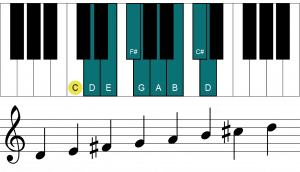
And here’s D minor scale. We can see the F#, as the 3rd degree of the scale, has been lowered to a F natural. The B, as the 6th of the scale, has been lowered to a Bb, and the C#, as the 7th of the scale, has been lowered to a C natural.
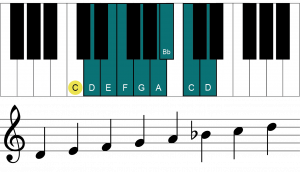
The harmonic minor scale can be created two ways. The first method is to lower the third and sixth scale degrees of a major scale by one semitone.
Here we have Bb major scale:
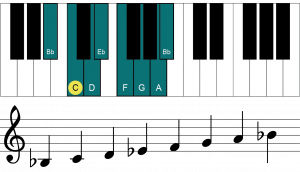
And here we have Bb harmonic minor scale. Note the lowered 3rd (Db) and 6th (Gb).
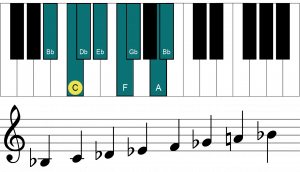
The second method is to use Bb natural minor to create Bb harmonic minor. To do this, we simply need to raise the 7th degree of Bb natural minor by one semitone.
Here is Bb natural minor:
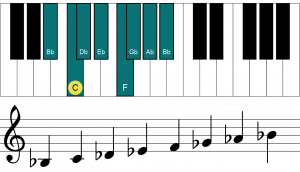
And here is Bb harmonic minor again:

Here is how it looks and works in the object. It has more right-on-spot notes/explanations, and it also uses lines to visually show original scale and the new scale created from the original one, side by side.
Note: Click the icon at the bottom right-hand side to view it in full screen mode.

